A decade ago, I was fortunate to work on a free online resource to bring weather science and safety to kids. PLAN!T NOW’s Young Meteorologist Program was an innovative, digital evolution of the NOAA National Weather Service’s famed Owlie Skywarn program, which educates kids on the dangers of severe storms and how to protect themselves.
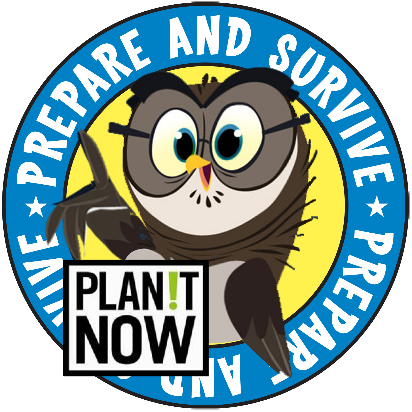
Alas, the interactive online game featuring a 21st-century Owlie — joined by his friends Professor Thomas, Professor West and Owlie’s antagonist, the rascally Gird — has gone the way of so many other Adobe Flash products. But Owlie continues to spread weather wisdom for the National Weather Service as a mascot for weather safety.
Also continuing to spread weather-wise ideas is Ron Gird — who is not at all rascally! Ron is a retired Meteorologist and Outreach Program Manager with the National Weather Service. He has served as a consultant to PLAN!T NOW, Time/Life Books, the American Meteorological Society, the National Geographic Society, and the Smithsonian National Air and Space Museum. Previous assignments included work with the NOAA Satellite Program, NWS Satellite and Spaceflight Programs, the NWS Storms Prediction Center, and The Analytical Sciences Corporation (TASC). He currently serves on the STEM Advisory Council for the Children’s Science Center.
We’re so grateful to Ron for his expert review of the Start with a Book Weather Wonders toolkit and we’re delighted to have him here to share tips and resources to take kids on a weather preparedness adventure!
Be a Force of Nature by Ron Gird
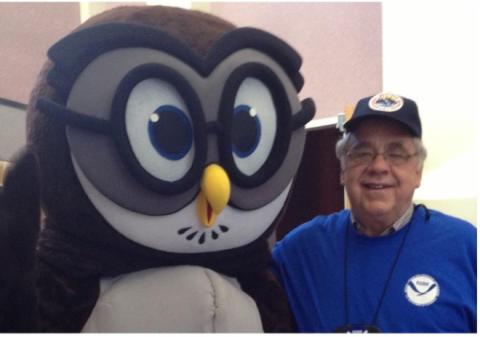
When the days are warmer and longer, there’s more time for outdoor summer fun. Summer fun can include swimming, fishing, baseball/softball, soccer, biking and family picnics. Summer can also include dangerous weather including thunderstorms and tornadoes, hurricanes, flash flooding and extreme heat.
Summer fun can also mean summer learning. With resources like Weather Wonders and Owlie Skywarn , caring adults can help kids read and learn about weather science, build awareness of weather dangers, and learn how to be prepared for severe weather.
My career with the National Weather Service included managing outreach programs to help ensure more families, schools, community groups, and youth organizations became Weather-Ready . Educating kids about weather hazards and safety and preparedness is something I’m passionate about—and still do, even in retirement.
So that’s what I want to share with you here so you can share it with kids. Helpful facts — and fun facts — about severe weather and how to stay safe. It’s information worth repeating often.
Thunderstorms/Tornadoes
Perhaps the most common summer weather event, severe thunderstorms produce lightning, hail, strong winds, and even a tornado.
It is important to know the difference between a severe thunderstorm watch and a severe thunderstorm warning.
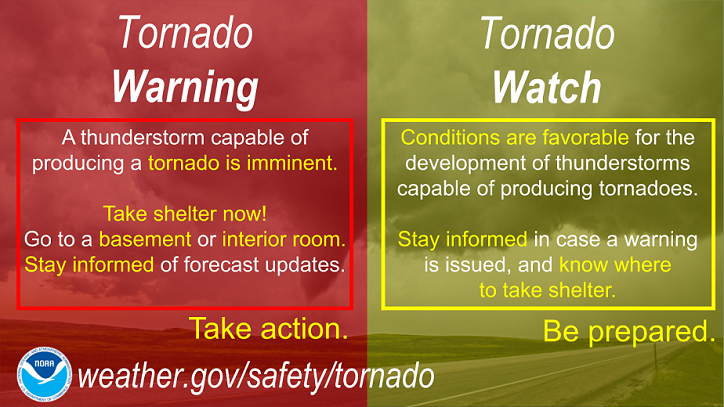
Tornado fact: A tornado has occurred in every state including Alaska and Hawaii!
Thunderstorms also produce lightning, and it can strike anywhere. Avoid open fields and water and do not shelter under tall trees or objects. Always go inside a building if possible. Remember, the National Weather Service says, “when thunder roars, go indoors.”
Hurricanes
Hurricanes are the biggest of all severe weather events during the summer. The hurricane season in the Atlantic Ocean and Gulf of Mexico begins on June 1 and ends until the last day in November. Hurricanes can be very large, hundreds of miles across. Hurricane destruction can be widespread and impact many coastal communities when it approaches the coast. Hurricanes can produce strong winds, large amounts of rain which in turn causes flooding. Hurricane storm surge can produce “walls of water” along the coast and knock out roads and destroy homes and buildings. Once the storm moves inland, its strength is greatly reduced but it still can produce inland flooding many miles away from the coastline.
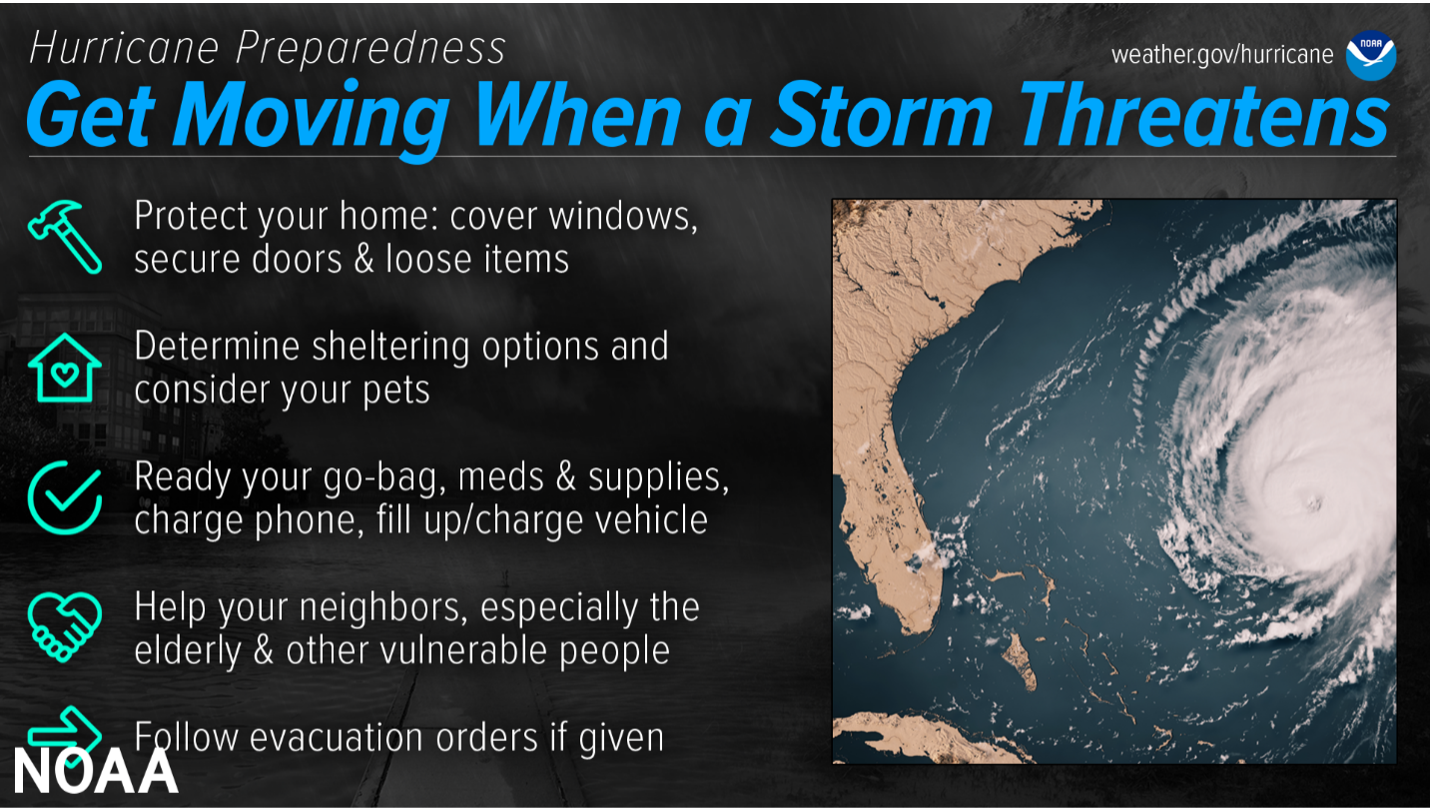
Hurricane fact: Hurricanes are given names to make it easier for everyone to talk about the storm and share important information. The World Meteorological Organization is in charge of the lists of hurricane names and keeps six lists of 21 male and female names used in rotation.
Floods and Flash Floods
Floods and flash floods can be caused by snowmelt, ice jams, and heavy rain produced by slow moving or stationary thunderstorms and hurricanes approaching the coast and moving inland. Flooding is an overflow of water onto normally dry land and may last days or weeks. Flashing flooding is the most dangerous kind of flooding, and is usually caused by heavy or excessive rainfall in a short period of time (less than 6 hours).
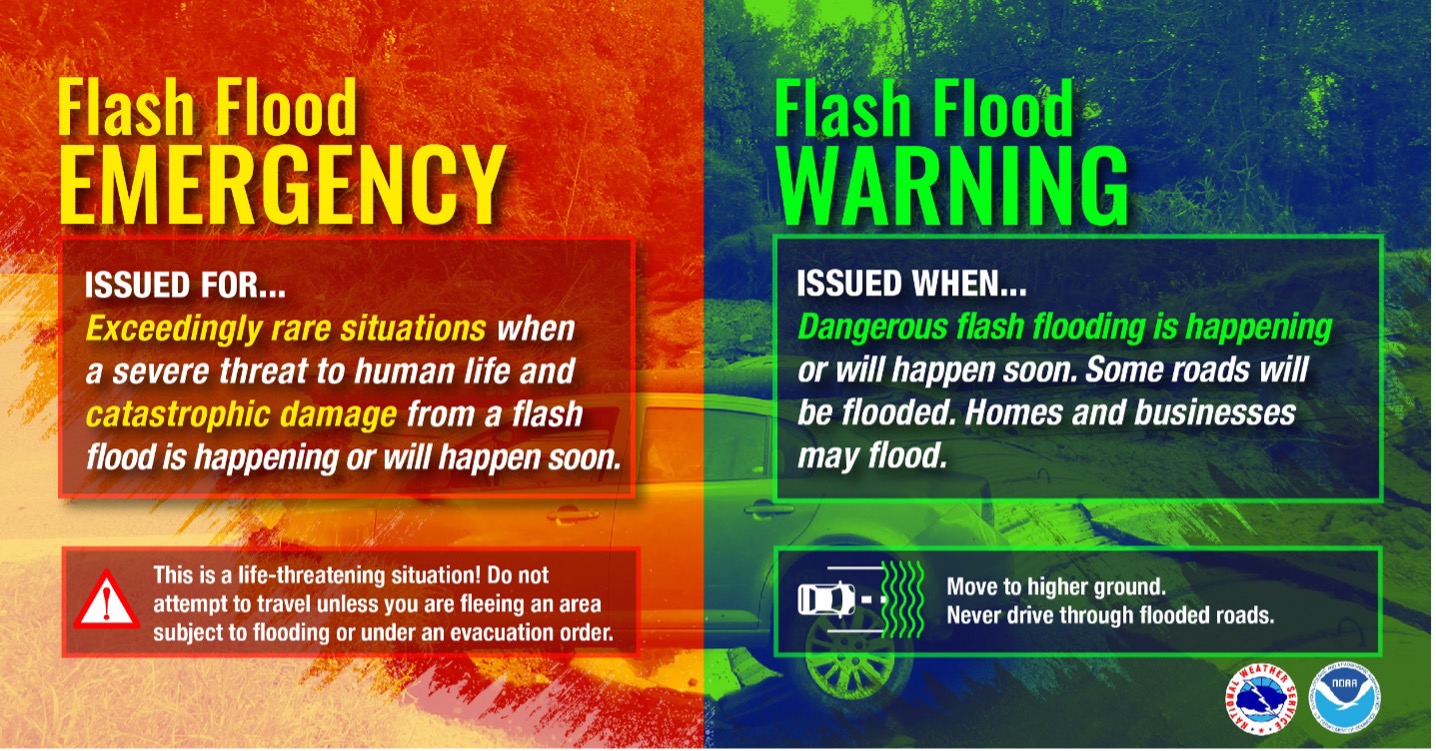
Camping, hiking, and mountain biking are activities which can easily encounter a flash flood. The rain producing the flash flood can be many miles away from your location and it will be hard to know when it approaches your area. Sign up to get emergency alerts for all the places you live, work, and play.
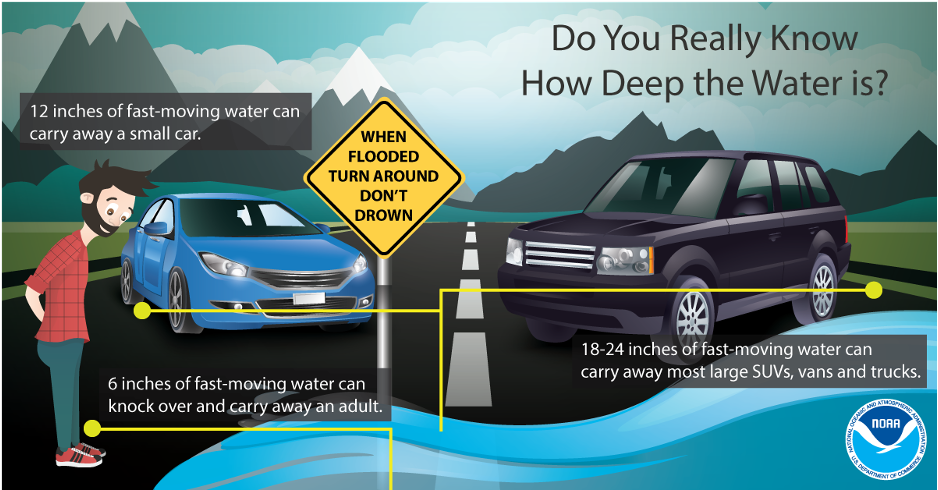
Back home in your neighborhood, NEVER drive or walk into floodwaters. It is impossible to know how deep the water is just by looking at it. Take the advice of the National Weather Service and “turn around, don’t drown.”
Flood fact: Flooding occurs in every U.S. state and territory and kills more people each year than tornadoes, hurricanes, or lightning.
Extreme Heat
Excessive heat can be a significant risk to people’s health, including heat stroke and heat exhaustion, which can result in death. Extreme heat events such as heat waves generally means unusually hot temperatures, possibly combined with oppressive humidity, lasting for two or more days.
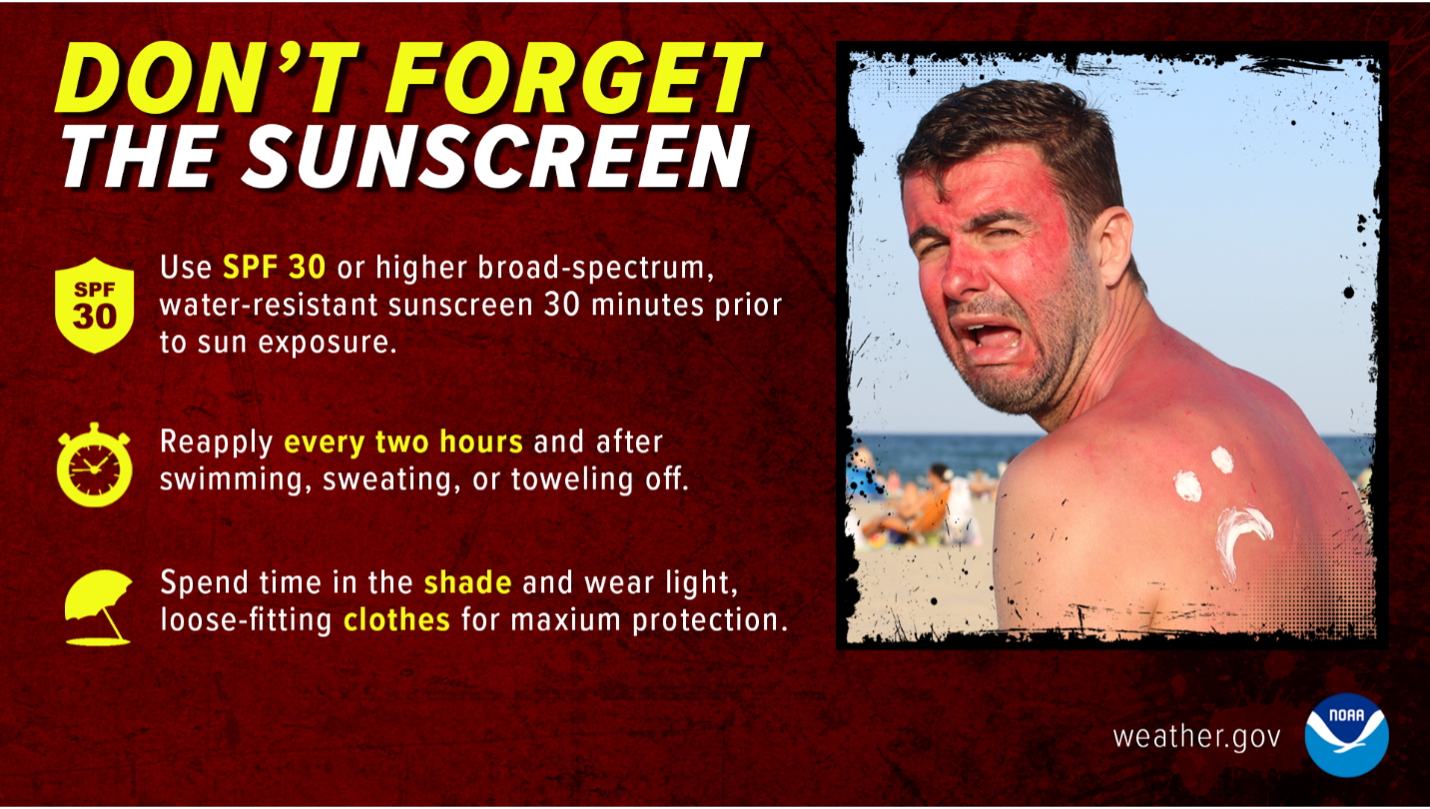
Warm temperatures can quickly become dangerous. NEVER leave people or pets in a closed car. Temperatures inside a parked car can rise almost 20 degrees within the first 10 minutes.
When temperatures are very high, make sure to:
- Stay hydrated. Don’t wait until you’re thirsty to drink.
- Wear loose, lightweight, light-colored clothing and a hat outdoors.
- Stay in air-conditioned buildings as much as possible. If you don’t have air conditioning, libraries, shopping malls, and community centers can provide a cool place to take a break from the heat.
Extreme heat fact: Heat waves can cause blackouts and power outages because of greater demand for energy to help keep us cool or from powerful thunderstorms. Be prepared to live without power during extreme heat.
Engaging kids in weather science does a lot to boost their science, math, and reading skills. But it also gives them what they need to know to prepare now to protect themselves and help their families when severe weather strikes their community.
Resources
- Start with a Book: Weather Wonders
- National Weather Service Safety Tips
- The Adventures of Owlie and Sam
About the Author
Join children’s literacy consultant Rachael Walker and many of the authors, parents, and educators she’s met and worked with to talk about how books have changed their lives, how to bring books to life for young readers, and how to enrich kids’ lives with good books.

